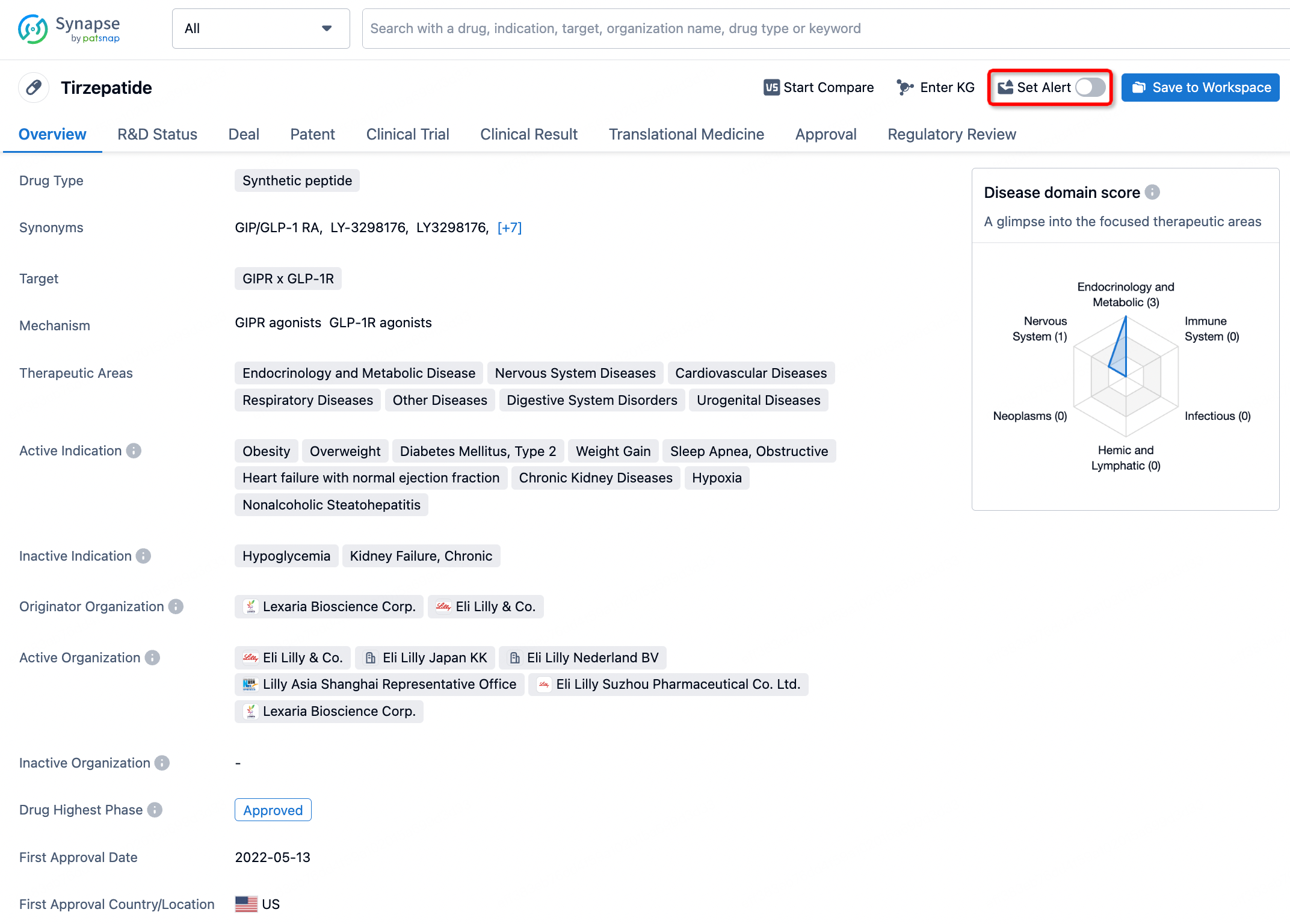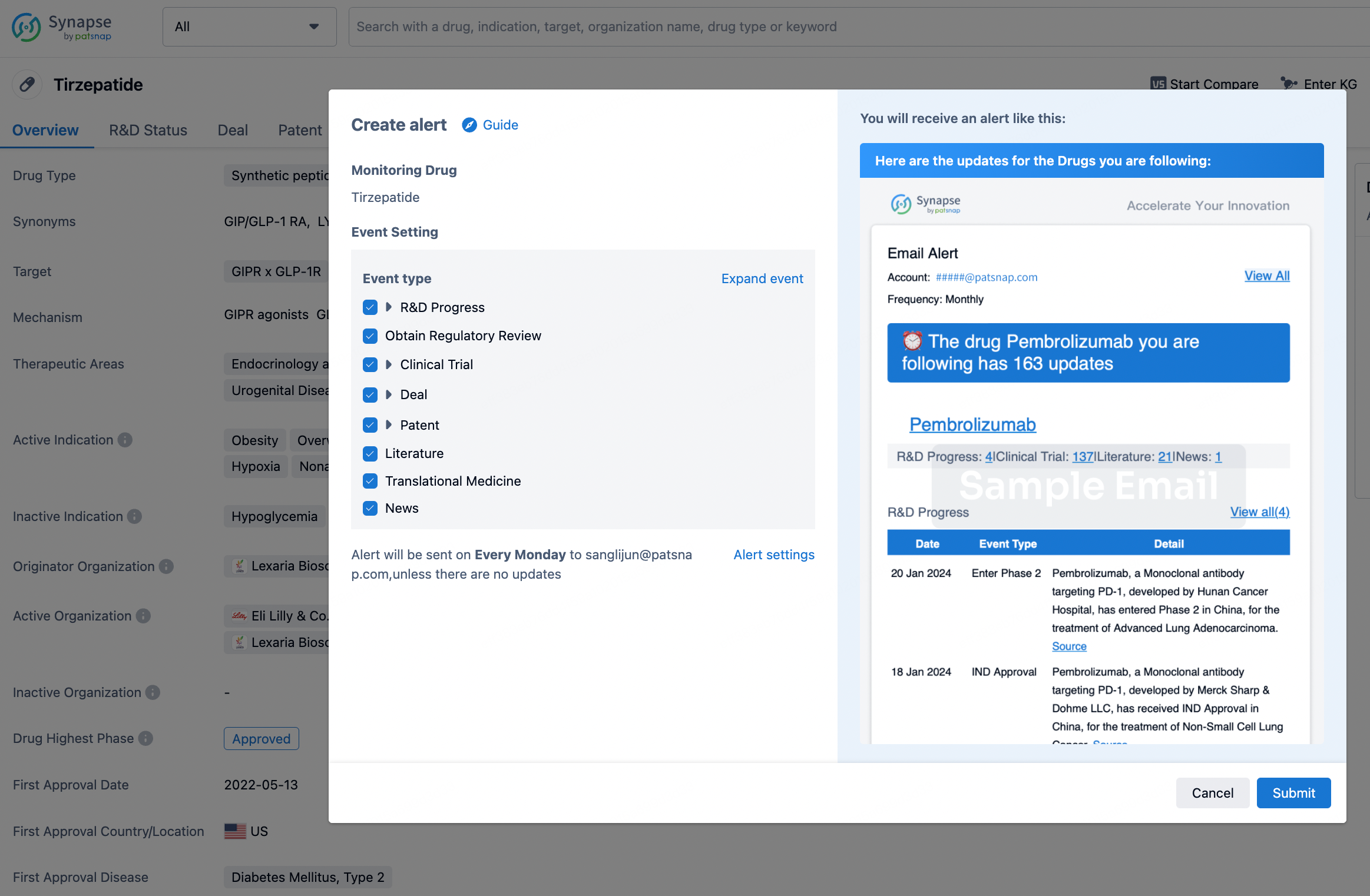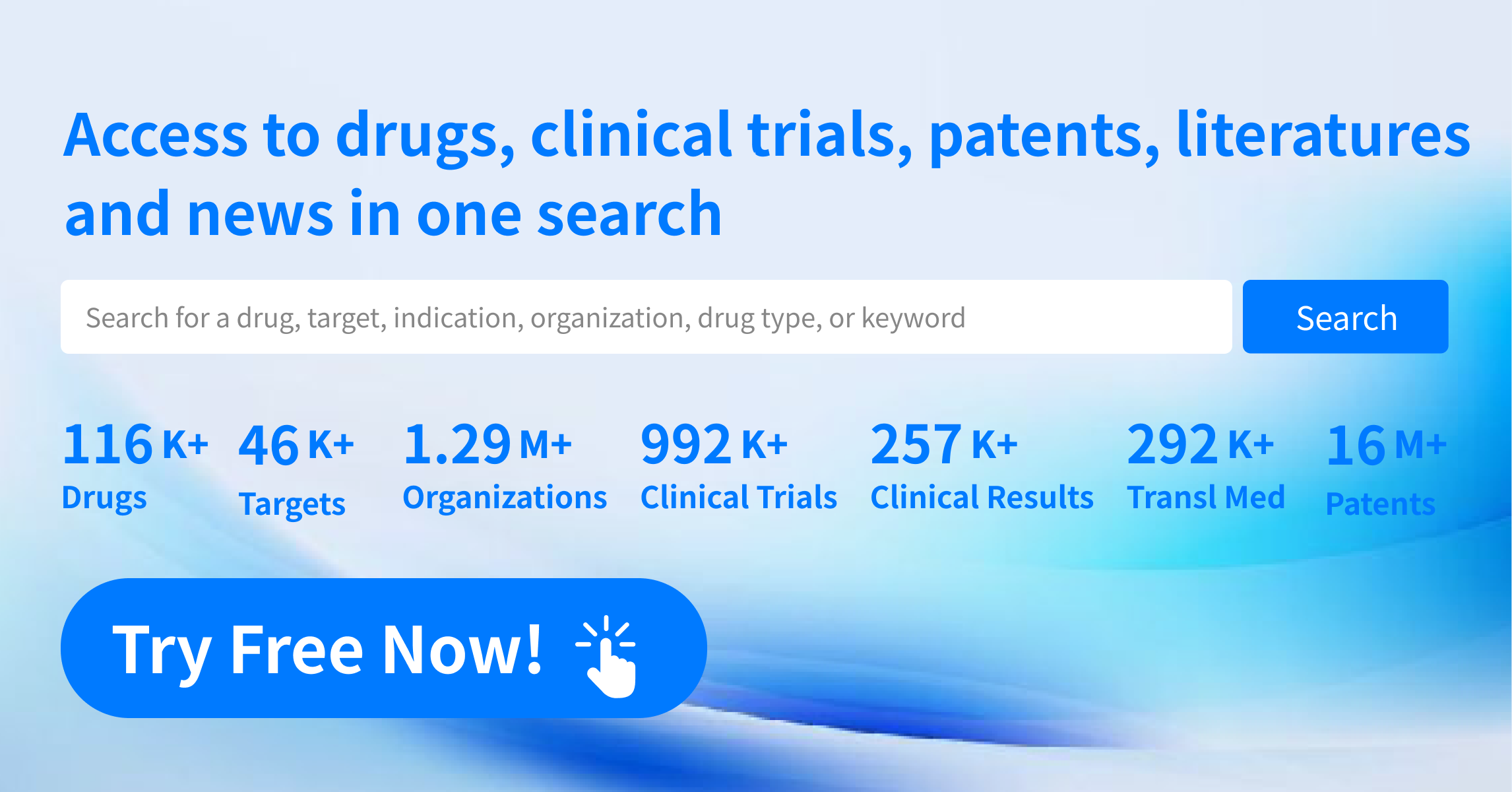Request Demo
What is Dihydralazine Sulfate used for?
15 June 2024
Introduction to Dihydralazine Sulfate:
Dihydralazine sulfate is a pharmaceutical agent commonly used in the management of hypertension. It is a derivative of hydralazine and exhibits similar pharmacological properties. This drug appears under various trade names depending on the manufacturer and geographic location, including Nepresol. The primary target of dihydralazine sulfate is the vascular smooth muscle, where it exerts direct vasodilatory effects. This medication serves as an antihypertensive by reducing the resistance in peripheral blood vessels, hence lowering blood pressure.
Dihydralazine sulfate has been studied extensively in both clinical and laboratory settings. Major research institutions have focused on its efficacy and safety profile, with numerous studies highlighting its benefits in patients who do not respond adequately to first-line antihypertensive agents. It’s categorized under the class of vasodilators, more specifically arteriolar vasodilators, and is indicated for managing hypertension, especially when other treatments are insufficient or contraindicated. Research is ongoing to explore its full potential, including combination therapies and its effects on different hypertensive populations.
Dihydralazine Sulfate Mechanism of Action:
The mechanism of action of dihydralazine sulfate revolves around its influence on the vascular smooth muscle. The drug works by directly causing relaxation of the arteriolar smooth muscles. This is achieved through the inhibition of calcium ion movement into the muscle cells, which is essential for muscle contraction. By averting the influx of calcium, dihydralazine sulfate induces vasodilation, reducing the resistance within the arterioles.
Additionally, dihydralazine sulfate may exert its effects through the stimulation of nitric oxide release, a potent vasodilator that contributes to the relaxation of blood vessels. The reduction in peripheral vascular resistance leads to decreased blood pressure, making it beneficial for patients with hypertension. However, this mechanism also stimulates the baroreceptor reflex, which can cause an increase in heart rate and cardiac output as compensatory mechanisms. Thus, it is often used in conjunction with beta-blockers or other antihypertensive agents to mitigate this reflex action.
How to Use Dihydralazine Sulfate:
Dihydralazine sulfate is typically administered orally, although in certain clinical settings, intravenous administration may be warranted for rapid onset of action. The oral form is available in tablet format, and the dosage is individualized based on the patient's response and tolerance to the drug. For adults, the initial dose generally ranges from 25 mg to 50 mg per day, divided into multiple doses. The dose may be gradually increased every few days up to a maximum of 200 mg per day, contingent on the therapeutic response and side effect profile.
For patients receiving the intravenous form, the onset of action is relatively rapid, typically within a few minutes, making it suitable for hypertensive emergencies. The dosage for intravenous administration is carefully titrated, starting at low doses and increasing as necessary.
It is crucial to follow the prescribed regimen and not to discontinue the medication abruptly, as this may precipitate a rebound hypertensive crisis. Regular monitoring of blood pressure is essential to adjust the dose and ensure optimal therapeutic outcomes.
What is Dihydralazine Sulfate Side Effects:
Like all medications, dihydralazine sulfate is associated with a spectrum of side effects. Common adverse effects include headaches, dizziness, and palpitations, which are often related to the vasodilatory action of the drug. Gastrointestinal discomfort, such as nausea and vomiting, may also occur. Some patients report experiencing fatigue and a general feeling of weakness.
More serious side effects, though less common, include a risk of drug-induced lupus erythematosus, characterized by symptoms such as joint pain, fever, and muscle pain. This autoimmune phenomenon necessitates discontinuation of the drug and appropriate medical intervention. Additionally, some patients may experience peripheral edema and fluid retention.
Contraindications for the use of dihydralazine sulfate include patients with a known hypersensitivity to the drug or its components, those with a history of lupus-like syndrome, and individuals with severe tachycardia or heart failure, where the increase in cardiac output could be detrimental. It is also contraindicated in patients with idiopathic hypertrophic subaortic stenosis due to the risk of exacerbating the condition.
What Other Drugs Will Affect Dihydralazine Sulfate:
Dihydralazine sulfate may interact with a variety of other medications, necessitating careful consideration and monitoring. Concurrent use of other antihypertensive drugs may potentiate the blood pressure-lowering effects, leading to hypotension. Therefore, dose adjustments of either medication may be required.
Beta-blockers are commonly co-administered with dihydralazine sulfate to counteract the reflex tachycardia. However, this combination requires careful monitoring, especially in patients with compromised cardiac function. The interaction between dihydralazine sulfate and beta-blockers can lead to enhanced antihypertensive effects, necessitating dose adjustments.
Nonsteroidal anti-inflammatory drugs (NSAIDs) can attenuate the antihypertensive effects of dihydralazine sulfate, potentially diminishing its efficacy. This is particularly important in patients who require chronic NSAID therapy for conditions such as arthritis.
Additionally, the use of monoamine oxidase inhibitors (MAOIs) with dihydralazine sulfate is contraindicated due to the risk of severe hypotension. Care must also be taken with other drugs that affect blood pressure or heart rate, including certain antidepressants, antipsychotics, and diuretics.
In conclusion, dihydralazine sulfate remains a valuable therapeutic option in the management of hypertension, particularly in patients who are refractory to other treatments. Understanding its mechanism of action, proper usage, potential side effects, and drug interactions is crucial for optimizing patient outcomes and ensuring safe administration. Ongoing research continues to shed light on its broader applications and long-term efficacy in various hypertensive populations.
Dihydralazine sulfate is a pharmaceutical agent commonly used in the management of hypertension. It is a derivative of hydralazine and exhibits similar pharmacological properties. This drug appears under various trade names depending on the manufacturer and geographic location, including Nepresol. The primary target of dihydralazine sulfate is the vascular smooth muscle, where it exerts direct vasodilatory effects. This medication serves as an antihypertensive by reducing the resistance in peripheral blood vessels, hence lowering blood pressure.
Dihydralazine sulfate has been studied extensively in both clinical and laboratory settings. Major research institutions have focused on its efficacy and safety profile, with numerous studies highlighting its benefits in patients who do not respond adequately to first-line antihypertensive agents. It’s categorized under the class of vasodilators, more specifically arteriolar vasodilators, and is indicated for managing hypertension, especially when other treatments are insufficient or contraindicated. Research is ongoing to explore its full potential, including combination therapies and its effects on different hypertensive populations.
Dihydralazine Sulfate Mechanism of Action:
The mechanism of action of dihydralazine sulfate revolves around its influence on the vascular smooth muscle. The drug works by directly causing relaxation of the arteriolar smooth muscles. This is achieved through the inhibition of calcium ion movement into the muscle cells, which is essential for muscle contraction. By averting the influx of calcium, dihydralazine sulfate induces vasodilation, reducing the resistance within the arterioles.
Additionally, dihydralazine sulfate may exert its effects through the stimulation of nitric oxide release, a potent vasodilator that contributes to the relaxation of blood vessels. The reduction in peripheral vascular resistance leads to decreased blood pressure, making it beneficial for patients with hypertension. However, this mechanism also stimulates the baroreceptor reflex, which can cause an increase in heart rate and cardiac output as compensatory mechanisms. Thus, it is often used in conjunction with beta-blockers or other antihypertensive agents to mitigate this reflex action.
How to Use Dihydralazine Sulfate:
Dihydralazine sulfate is typically administered orally, although in certain clinical settings, intravenous administration may be warranted for rapid onset of action. The oral form is available in tablet format, and the dosage is individualized based on the patient's response and tolerance to the drug. For adults, the initial dose generally ranges from 25 mg to 50 mg per day, divided into multiple doses. The dose may be gradually increased every few days up to a maximum of 200 mg per day, contingent on the therapeutic response and side effect profile.
For patients receiving the intravenous form, the onset of action is relatively rapid, typically within a few minutes, making it suitable for hypertensive emergencies. The dosage for intravenous administration is carefully titrated, starting at low doses and increasing as necessary.
It is crucial to follow the prescribed regimen and not to discontinue the medication abruptly, as this may precipitate a rebound hypertensive crisis. Regular monitoring of blood pressure is essential to adjust the dose and ensure optimal therapeutic outcomes.
What is Dihydralazine Sulfate Side Effects:
Like all medications, dihydralazine sulfate is associated with a spectrum of side effects. Common adverse effects include headaches, dizziness, and palpitations, which are often related to the vasodilatory action of the drug. Gastrointestinal discomfort, such as nausea and vomiting, may also occur. Some patients report experiencing fatigue and a general feeling of weakness.
More serious side effects, though less common, include a risk of drug-induced lupus erythematosus, characterized by symptoms such as joint pain, fever, and muscle pain. This autoimmune phenomenon necessitates discontinuation of the drug and appropriate medical intervention. Additionally, some patients may experience peripheral edema and fluid retention.
Contraindications for the use of dihydralazine sulfate include patients with a known hypersensitivity to the drug or its components, those with a history of lupus-like syndrome, and individuals with severe tachycardia or heart failure, where the increase in cardiac output could be detrimental. It is also contraindicated in patients with idiopathic hypertrophic subaortic stenosis due to the risk of exacerbating the condition.
What Other Drugs Will Affect Dihydralazine Sulfate:
Dihydralazine sulfate may interact with a variety of other medications, necessitating careful consideration and monitoring. Concurrent use of other antihypertensive drugs may potentiate the blood pressure-lowering effects, leading to hypotension. Therefore, dose adjustments of either medication may be required.
Beta-blockers are commonly co-administered with dihydralazine sulfate to counteract the reflex tachycardia. However, this combination requires careful monitoring, especially in patients with compromised cardiac function. The interaction between dihydralazine sulfate and beta-blockers can lead to enhanced antihypertensive effects, necessitating dose adjustments.
Nonsteroidal anti-inflammatory drugs (NSAIDs) can attenuate the antihypertensive effects of dihydralazine sulfate, potentially diminishing its efficacy. This is particularly important in patients who require chronic NSAID therapy for conditions such as arthritis.
Additionally, the use of monoamine oxidase inhibitors (MAOIs) with dihydralazine sulfate is contraindicated due to the risk of severe hypotension. Care must also be taken with other drugs that affect blood pressure or heart rate, including certain antidepressants, antipsychotics, and diuretics.
In conclusion, dihydralazine sulfate remains a valuable therapeutic option in the management of hypertension, particularly in patients who are refractory to other treatments. Understanding its mechanism of action, proper usage, potential side effects, and drug interactions is crucial for optimizing patient outcomes and ensuring safe administration. Ongoing research continues to shed light on its broader applications and long-term efficacy in various hypertensive populations.
How to obtain the latest development progress of all drugs?
In the Synapse database, you can stay updated on the latest research and development advances of all drugs. This service is accessible anytime and anywhere, with updates available daily or weekly. Use the "Set Alert" function to stay informed. Click on the image below to embark on a brand new journey of drug discovery!
AI Agents Built for Biopharma Breakthroughs
Accelerate discovery. Empower decisions. Transform outcomes.
Get started for free today!
Accelerate Strategic R&D decision making with Synapse, PatSnap’s AI-powered Connected Innovation Intelligence Platform Built for Life Sciences Professionals.
Start your data trial now!
Synapse data is also accessible to external entities via APIs or data packages. Empower better decisions with the latest in pharmaceutical intelligence.


